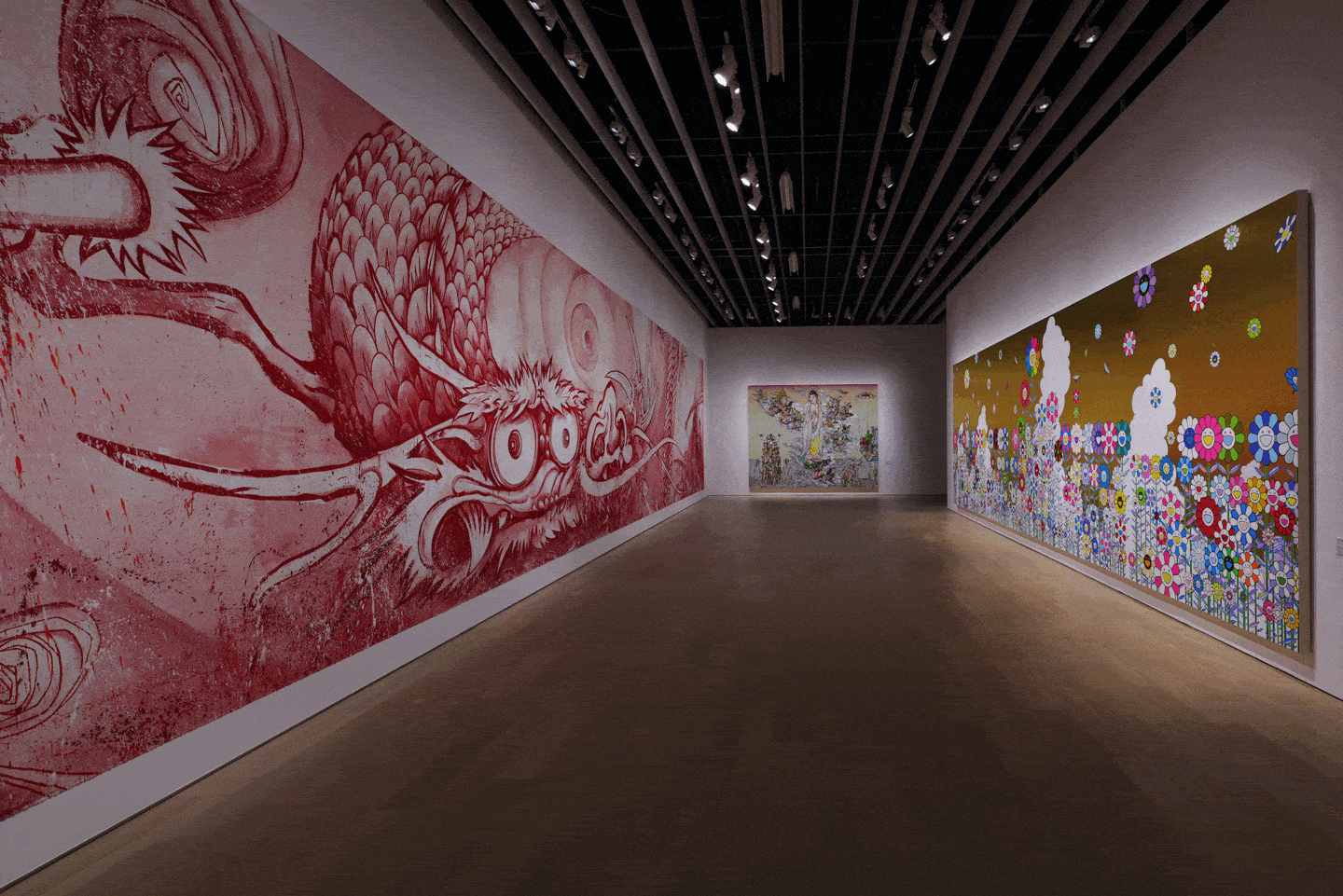90th anniversary exhibition
February 3–September 1, 2024
Sakyo Ward
124 Okazaki Enshojicho
Kyoto 606-8344
Japan
Hours: Tuesday–Sunday 10am–6pm
Takashi Murakami Mononoke Kyoto, a large-scale solo exhibition of works by Takashi Murakami (b. 1962), opened on February 3 at Kyoto City KYOCERA Museum of Art which celebrated its ninetieth anniversary in 2023. Murakami, who majored in nihonga (Japanese-style painting) at university, has been greatly influenced by the painters who thrived in Kyoto during the Edo period and has incorporated them into his own work. The exhibition showcases the new Murakami World he has created by approaching head-on the city that has fascinated the artist since the beginning of his career.
Superflat, the art and cultural theory that Murakami proposed in 2000, has had a major impact on the contemporary art scene over the years. The theory has explored the essential meaning of art, not only linking traditional Japanese pictorial expression with pop culture, such as anime, manga, and video games, but also considering Japanese sensibilities and aspects of society before and after World War II, along with capitalist economics, politics, and religion, all on a flattened plane. With a distinctively Japanese perspective, Murakami’s career has continually challenged and stimulated the international art scene that takes the Western values as its de facto norm.
Divided into multiple sections, the exhibition presents about 170 works, the majority of which are either new creations or pieces never before exhibited in Japan. This includes his newly produced Rakuchū-Rakugai-zu Byōbu: Iwasa Matabei RIP; a series of works based on the theme of the four deities that symbolize the four cardinal directions; and other representative works.
Throughout the seven-month period of the exhibition, various special programs related to traditional seasonal events and festivals of Japan and Kyoto are planned, in addition to related programs such as lectures and gallery talks. Further details will be announced on the exhibition website and social media accounts as soon as they are confirmed.
Exhibition highlights
13-meter-long Murakami version of masterpiece Rakuchu Rakugai Zu welcomes visitors
Rakuchu Rakugai Zu Byobu or “Scenes In and Around Kyoto” (Funaki Version) (Edo period, 17th century) by Iwasa Matabei depicts various scenes of Kyoto, including shrines and temples, festivals and entertainment districts, and people enjoying Kabuki and Joruri (traditional Japanese puppet plays). A thirteen-meter-long contemporary Rakuchu Rakugai Zu (Rakuchū-Rakugai-zu Byōbu: Iwasa Matabei RIP), painted by Murakami while referencing the original, will welcome visitors to the exhibition.
Murakami’s version of The Wind and Thunder Gods and Dragon and Clouds challenge the most unorthodox of painters of the Edo period
In addition to the above-mentioned Rakuchu Rakugai Zu, this exhibition features the eighteen-meter-long Dragon in Clouds—Red Mutation: The version I painted myself in annoyance after Professor Nobuo Tsuji told me, “Why don’t you paint something yourself for once?” shown for the first time in Japan in which Murakami took on Soga Shohaku’s Dragon and Clouds (18th century), a work that had a deep impact on him. In addition, the new Murakami version of Tawaraya Sotatsu’s The Wind and Thunder Gods (National Treasure, 17th century), a representative work of the Rimpa school, will surprise viewers with its humor.
The origin of Heian-kyo—Murakami’s depiction of four devine symbols and the Hexagonal Double-Helix Tower (Rokkaku Rasendo)
Surrounded by mountains, rivers, and ponds and protected by the Four Symbols (Blue Dragon, White Tiger, Vermillion Bird, and Black Tortoise) that symbolize the four cardinal directions, Heian-kyo—a former name given to Kyoto—was considered an ideal place. In this exhibition, a new work by Murakami with these divine beasts as its motif will be shown on four walls surrounding Murakami’s version of Heian-kyo. The Hexagonal Double-Helix Tower rises in the center of the space to ward off the disturbing presence of wandering mononoke, or evil spirits.
Click here to read the full press release.
Media contact: Yoshiko Nawa, Kyoto City KYOCERA Museum of Art, pr [at] kyoto-museum.jp

